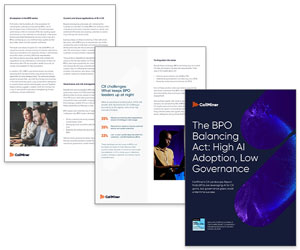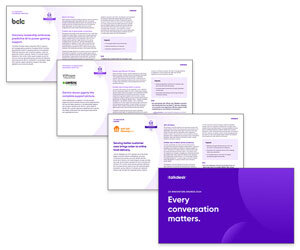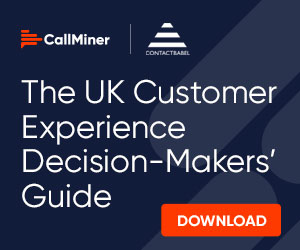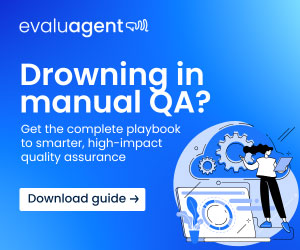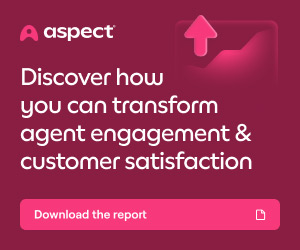Celia Cerdeira at Talkdesk dives into what healthcare customer experience is, why it matters, and how today’s technology is helping innovative-thinking organizations reimagine care delivery.
In the past year, patients had to endure lengthy wait times, with the median ER visit taking 2 hours and 42 minutes.
Additionally, almost half of America’s physicians report feeling burnt out, a problem that damages both workforce stability and the quality of care.
These are typically symptoms of legacy infrastructure, administrative waste, and a lack of coordination between systems. However, that’s beginning to change.
Personalized support is enhancing the customer experience, and artificial intelligence (AI) is streamlining operations.
What is Customer Experience in Healthcare?
Healthcare customer experience (CX) is the patient experience with a provider, from the initial call or visit to the provider’s site, to post-care follow-up. In contrast to issue and reaction-driven customer service, healthcare CX is proactive and systematic.
It spans from administrative processes such as scheduling and billing to clinical encounters with care teams, digital experiences across portals, and the emotional context under which patients are cared for.
When healthcare CX is smooth and supportive, it builds trust, helps patients feel more confident in their care, and strengthens the provider’s reputation. Health issues can be stressful, so patients need empathy and clear communication from the start.
Why is CX in Healthcare Important?
Customer experience is most critical in healthcare as it describes how patients view their care and whether or not they remain engaged.
Patients are more likely to adhere to clinical advice and show up for follow-up visits when they feel respected, informed, and heard.
On the other hand, poor experiences like long waits, confusing bills, or insensitive communications can cause patients to delay care or even stop seeking it.
Experience is also a growing differentiator in a value-based care environment. Healthcare organizations know that a superior customer experience results in satisfaction but also better health outcomes, operational performance, and sustained loyalty.
Meeting Patient Healthcare Demands – 6 Core CX Healthcare Priorities
Today’s patients expect more than competent clinical care. They expect every interaction to be timely, personal, and easy to navigate.
As the healthcare landscape becomes more consumer-driven, providers must align with what really matters to most patients at each step of the journey. Consider these six core priorities that reflect the real-world expectations shaping healthcare experiences.
1. Personalised Care That Improves Health Outcomes
Individualized care is more than surface-level gestures. It tailors treatments, communication, and support based on medical history, individual tastes, and the situations of each patient.
More personalized care inspires confidence, facilitates compliance with treatment plans, and yields improved clinical outcomes.
Still, many healthcare organizations struggle to deliver truly individualized experiences. Outdated infrastructure, scattered data, and rigid workflows typically stand in the way. Even when there is a desire to personalize, the architecture to do so at scale often doesn’t exist.
2. Empathy Across the Care Journey
Empathy is a cornerstone of exceptional healthcare experiences, and it doesn’t come solely from physicians. Patients often form lasting impressions based on their interactions with nurses, technicians, administrative staff, and contact centre agents.
Enhancing empathy at these touchpoints can directly boost patient satisfaction. With AI-powered tools healthcare organizations can equip their frontline teams with real-time insights into patient tone, mood, and sentiment.
This empowers staff to respond with greater sensitivity and emotional awareness, making every conversation more human, whether it happens in person, over the phone, or online.
3. Patient Feedback Channels That Lead to Real Improvement
Patients often expect healthcare organizations to make it easy to share their experiences. Follow-up surveys, mobile prompts, and check-in emails are all effective ways to gather real-time feedback.
However, gathering information isn’t enough. Patients also want evidence that their comments and pain points lead to action.
Through the identification of patterns, workflow optimization, and adjustments to staff training, healthcare organizations can turn insight into measurable change. When patients see changes, like shorter wait times or enhanced communication, they’re more likely to stay engaged and feel valued.
4. Convenient Diagnostic Options For Faster, More Accurate Patient Care
Patients expect healthcare to match the ease and accessibility of other service industries. Diagnostic and treatment processes that once required multiple in-person visits can now be streamlined through flexible, tech-enabled channels, including:
- Telehealth appointments – Enable remote consultations, reducing the need for travel and minimizing delays.
- Online patient portals – Provide 24/7 access to test results, appointment details, and secure messaging.
- Digital check-ins – Accelerate front desk workflows with mobile-friendly registration before visits.
Convenience also comes from smarter care models. A management by exception approach allows providers to remotely monitor vital signs and intervene only when thresholds are exceeded, offering patients continuous support without unnecessary appointments.
This model is especially valuable for those managing chronic conditions or recovering from major procedures.
5. Data Security Software That Keeps Patient Data Safe
Healthcare details are the most private pieces of patient information, including medical history, insurance, and Social Security numbers.
The increase in online engagement requires a robust security system that ensures patients about the protection of their information at all points of contact, from online applications to telemedicine consultations.
Customer experience platforms for healthcare can meet that requirement. HIPAA-compliant solutions place encryption, secure authentication, and access controls front and centre of data protection everywhere, through every channel.
With high compliance levels and proactive risk reduction, healthcare organizations can increase patient trust and confidence.
6. Efficient Customer Support That Blends AI With Real Human Interaction
When patients reach out with a question about billing, appointments, prescriptions, or follow-up care they typically expect quick and efficient help. Wait times, redundant identity verifications, and inconsistent handoffs build resistance and break down trust.
To meet these expectations, healthcare organizations rely on AI to complement, not replace, human support.
Agentic AI can handle routine tasks, verify identities instantly, and surface real-time patient context, so human agents can focus on the complex, emotional, or high-stakes moments where empathy matters most.
What CX Challenges Do Healthcare Organizations Face?
Healthcare organizations can face a unique set of customer experience challenges, including:
- Long wait times – Patients often face delays when booking appointments, accessing follow-up care, or getting answers to simple questions. These bottlenecks usually stem from manual scheduling systems, limited staff capacity, or disconnected communication channels.
- Unclear billing and payments – Patients sometimes struggle to understand their fees, coverage, or out-of-pocket responsibilities.
- Broken communication – Without integrated systems, patients might get contradictory information.
- Data compliance and privacy – Regulations like HIPAA require strict control over how patient data is handled. Without the right systems, managing consent, secure access, and data sharing becomes slow and error-prone.
- Limited self-service options – Patients want to handle simpler tasks like check-in, rescheduling, and bill payments online, but many providers still rely on manual workflows that require phone calls.
CX automation in healthcare can solve these pain points. From scheduling and FAQ management by virtual assistants to analytics that expose friction points in real time, AI allows healthcare teams to provide faster, more standardized, and more individualized service. It also simplifies compliance by automating record-keeping and safeguarding sensitive data.
Customer Experience Trends in Healthcare to Monitor
As healthcare continues to modernize, several major trends are reshaping how providers engage with and support patients.
AI-Powered Efficiency
From back-office workflows to real-time clinical support, AI is transforming how healthcare organizations deliver care. Providers are using it to optimize scheduling, support diagnostics, and flag post-discharge risks as they emerge.
These capabilities help teams anticipate patient needs, allocate resources more efficiently, and ensure continuity across every step of the healthcare journey.
Omnichannel Patient Communication
Patients expect to communicate with providers through the same channels they use daily, phone, text, email, mobile app, or live chat.
An omnichannel engagement strategy makes every interaction seamless, predictable, and guided by prior context.
By eliminating the need for patients to repeat themselves, the experience becomes less frustrating and more seamless, helping providers maintain continuity across every touchpoint.
Data-Driven Analytics For Better Care Accuracy
Sophisticated analysis gives providers more visibility into patient behaviour, treatment outcomes, and operational performance.
This information allows teams to intervene earlier, better manage resources, and continuously refine the patient experience.
The more actionable data is, the better healthcare organizations can coordinate, reduce errors, and deliver care that is timely and evidence-based.
Exploring the End-to-End Customer Experience in Healthcare
The healthcare experience involves several stages. Insight and optimization of these touchpoints are critical to delivering a seamless, patient-cantered experience:
- Awareness – Patients start researching providers, making clear, accessible information critical.
- Consideration – Clear service explanations, pricing, and reviews allow patients to make informed decisions about their care.
- Scheduling and onboarding – Online scheduling and faster intake simplify access to care.
- Diagnosis – Timely, empathetic communication and subsequent steps are what patients expect.
- Treatment – Coordinated treatment and routine progress updates establish trust and help patients feel cared for.
- Discharge and transition – Easy-to-follow instructions and accessible resources facilitate patients’ transition to self-care.
- Billing and payments – Clear costs, easy-to-read statements, and online payment systems improve the financial experience.
- Ongoing engagement and feedback – Follow-up, tailored health content, and feedback systems keep patients engaged and informed post-care.
Combined, these stages form a continuous cycle, one where consistent, thoughtful experiences drive stronger relationships and better outcomes.
This blog post has been re-published by kind permission of Talkdesk – View the Original Article
For more information about Talkdesk - visit the Talkdesk Website
Call Centre Helper is not responsible for the content of these guest blog posts. The opinions expressed in this article are those of the author, and do not necessarily reflect those of Call Centre Helper.
Author: Talkdesk
Reviewed by: Jo Robinson
Published On: 22nd Sep 2025
Read more about - Guest Blogs, Celia Cerdeira, Talkdesk




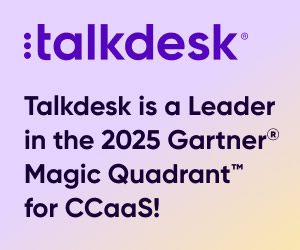

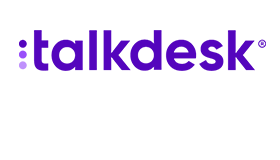 Talkdesk is a global customer experience leader for customer-obsessed companies. Our contact center solution provides a better way for businesses and customers to engage with one another.
Talkdesk is a global customer experience leader for customer-obsessed companies. Our contact center solution provides a better way for businesses and customers to engage with one another. 




